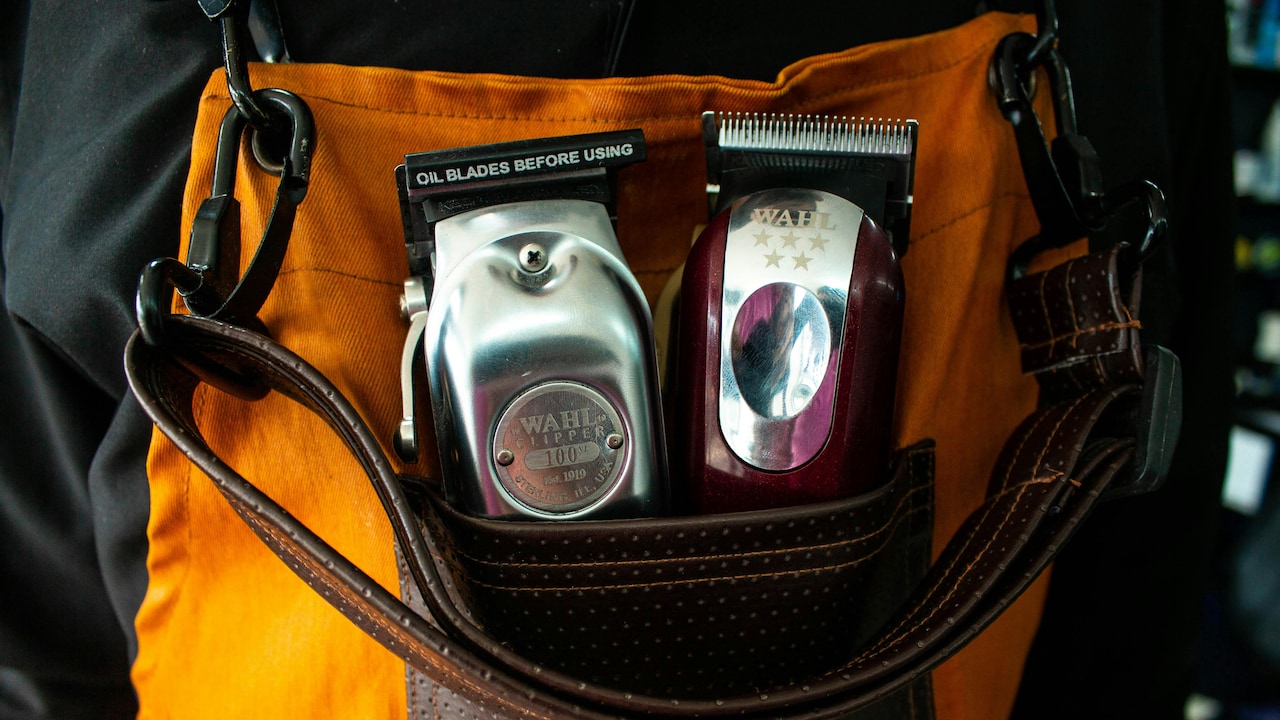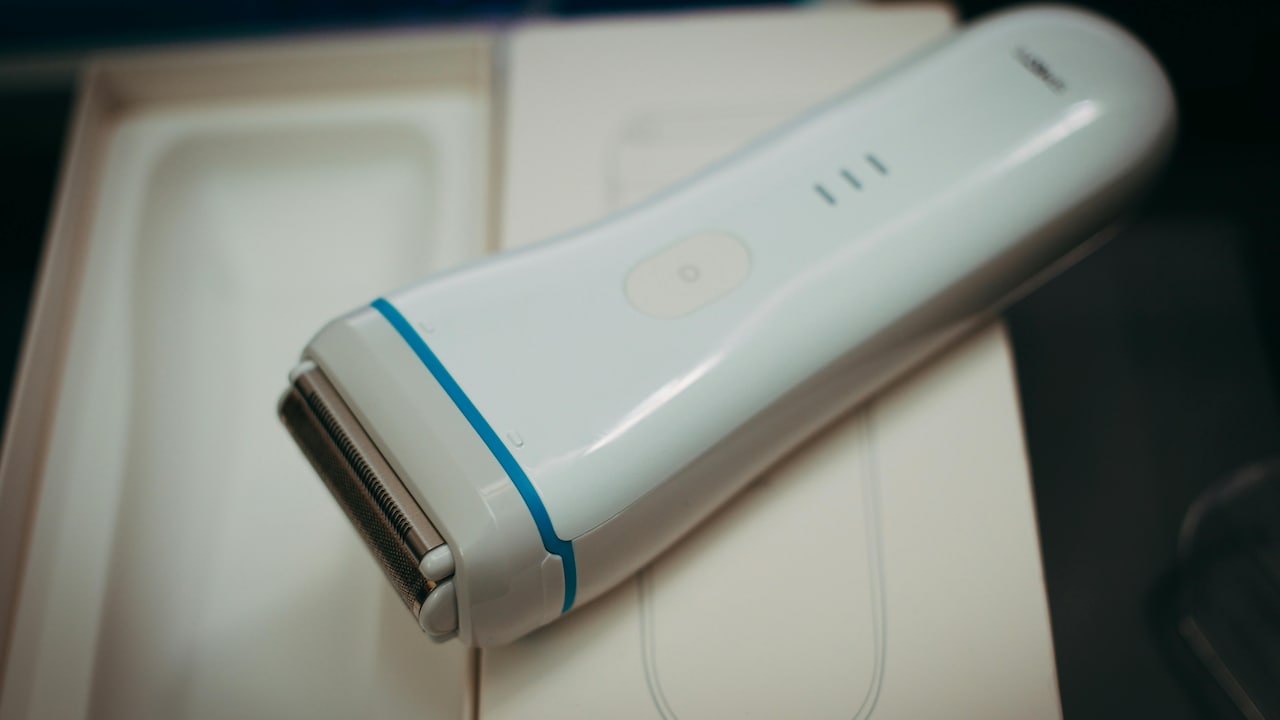How To Choose Best Hair Trimmers for Sensitive Skin: Guard Settings, Blade Types and More
How to choose best hair trimmers for sensitive skin: From choosing the right guard settings and blade types to mastering post-shave care, this is an in-depth guide to making every trim smooth.

Best Hair Trimmers for Sensitive Skin: Guard Settings, Blade Types And Post-Shave Tips.
There's something oddly satisfying about a fresh trim, the crisp edges, the clean feel, and that subtle confidence it brings. But for those with sensitive skin, grooming can sometimes turn into a battle between style and comfort. The redness, bumps or itch that follow a trimming session can easily dampen the joy of a well-kept beard or neckline. The truth is, it's not always the skin's fault. Often, it's the wrong choice of trimmer settings, blades, or a lack of proper aftercare that causes trouble.
This article explores how to choose the right hair trimmer, adjust its settings wisely, and care for the skin post-shave, because good grooming should never come at the cost of comfort.

How To Choose Best Hair Trimmers for Sensitive Skin: Guard Settings, Blade Types and Post-Shave Care
Photo Credit: Pexels
Trimming Without Trouble: A Step-by-Step Guide
1. Understanding Sensitive Skin and Its Needs
Sensitive skin is like that one friend who loves attention, ignore it, and it'll remind you who's boss. It reacts to friction, temperature changes and even certain metals. When using a trimmer, these sensitivities get amplified, especially if the wrong tool meets the wrong technique.
A proper grooming routine starts with recognising what your skin needs. Some people react to dry shaving, others to high-speed blades or aggressive pressure. For delicate skin, moisture and protection are essential. Always begin with a clean, slightly damp face, and if possible, use a pre-shave gel or a few drops of coconut oil to reduce friction.
It's worth remembering that sensitive skin doesn't mean avoiding grooming altogether. It simply requires a bit of care, the right trimmer, a patient hand, and products that soothe instead of sting. The goal is not just a neat beard or trimmed hairline, but skin that looks as healthy as it feels.
2. Choosing the Right Trimmer for Gentle Grooming
Not all trimmers are created equal. For sensitive skin, the focus should be on smooth operation, quality materials and reliable performance. The perfect trimmer glides rather than tugs. Stainless steel or titanium-coated blades are usually the safest bets, they resist rust and glide easily, minimising irritation.
When browsing options, look for models designed with hypoallergenic blades. Some premium versions even use ceramic blades that stay cool and reduce heat build-up, which is a common cause of redness. Cordless trimmers offer flexibility, but those with adjustable speed settings give better control. A slower speed is kinder on the skin, especially around delicate areas like the neck or jawline.
Another underrated aspect is the trimmer's grip. A good ergonomic design ensures steady control, preventing accidental nicks. While flashy features might tempt you, it's wise to invest in quality over gimmicks. Spending ₹2,000–₹3,500 on a reliable trimmer can save far more in skincare products later.
3. Decoding Guard Settings for a Comfortable Trim
The guard setting determines how close the trimmer cuts, and for sensitive skin, that setting makes all the difference. A guard acts as a protective buffer, ensuring the blades don't scrape directly against the skin.
Beginners often make the mistake of choosing the lowest guard setting, chasing that ‘clean' finish. But for those prone to irritation, this can be a recipe for discomfort. Start with a higher setting, perhaps 3mm or 5mm, and gradually work down to what feels comfortable. This not only helps avoid razor burn but also ensures a more natural, even look.
Guards with smooth, rounded edges work best as they prevent harsh contact. It's also essential to clean and oil the guard regularly; trapped hair or debris can cause micro-scratches that lead to irritation. Remember, trimming isn't about racing for the shortest cut, it's about finding that sweet spot where neatness meets comfort.
Also Read: Trimmer Blades, Battery And Features That Matter: Buying Guide
4. Blade Types That Love Your Skin
Blades are the heart of any trimmer, and for sensitive skin, they must be both sharp and gentle. Dull blades tug at hair instead of cutting it cleanly, causing redness and tiny abrasions. The right blade ensures smooth performance without friction.
Stainless steel blades are the go-to for durability and affordability. Titanium-coated ones add an extra layer of smoothness, ideal for longer use. Ceramic blades, on the other hand, are champions of comfort. They stay cooler and glide effortlessly, making them perfect for extended grooming sessions.
Some trimmers now feature self-sharpening blades, which is a blessing for anyone tired of constant maintenance. However, blade care remains crucial; cleaning them after every use and applying a drop of clipper oil extends their life and keeps them gentle on the skin. A well-maintained blade doesn't just protect the skin; it makes every trim feel professional.
5. Preparing Your Skin Before Trimming
The secret to a smooth trim lies in preparation. Think of it as warming up before a workout. A few simple steps can drastically reduce irritation. Start by washing your face with lukewarm water and a mild cleanser. This softens the hair and opens up pores, making trimming easier.
If your skin tends to get dry, dab on a thin layer of light oil or pre-shave serum. It creates a protective barrier and helps the trimmer glide smoothly. Avoid using alcohol-based products before trimming; they dry out the skin, increasing the risk of post-shave redness.
It also helps to trim in front of a mirror under good lighting. Visibility matters, especially when working around curves like the jawline or behind the ears. Taking two extra minutes for prep can make the difference between a quick trim and a comfortable one.
6. The Right Technique: Gentle Hands Win the Game
A great trimmer in the wrong hands can still wreak havoc. The technique is where everything comes together. Always trim in the direction of hair growth; it's gentler on the follicles and prevents ingrown hair.
Avoid pressing too hard. Let the trimmer glide naturally over the skin; pressure only increases friction. Use short, controlled strokes instead of long sweeping motions. Around sensitive zones, like under the chin or along the neck, stretch the skin slightly with your free hand to get an even cut without pulling.
If trimming a beard, start from the sides and move towards the chin, adjusting the guard setting gradually. The key is to go slow and steady. Remember, grooming isn't a race; it's a ritual that deserves patience.

Trimmers for Sensitive Skin: Guard Settings, Blade Types and Post-Shave Care
Photo Credit: Pexels
7. Common Mistakes That Aggravate Sensitive Skin
Many skin woes after trimming stem from small yet avoidable mistakes. Using a trimmer on dry, unwashed skin tops the list. This causes friction and traps dirt in pores. Another misstep is ignoring blade maintenance, unclean blades harbour bacteria, which can lead to breakouts.
Trimming too frequently is another culprit. Sensitive skin needs time to recover, so spacing out sessions every few days is healthier. Overlapping strokes or going over the same area repeatedly also heightens irritation.
And let's not forget aftercare. Many skip it altogether, thinking the job ends once the trimmer's off. The truth? Post-trim care is just as crucial as the trim itself. Avoid these pitfalls, and grooming transforms from a struggle into a satisfying self-care ritual.
8. Post-Shave Care: Calm, Cool and Collected
Post-trim care is where sensitive skin breathes a sigh of relief. Begin by rinsing your face with cool water to close the pores and wash away loose hair. Pat gently with a soft towel; rubbing can aggravate the skin.
Apply a soothing balm or aloe vera gel. Products with chamomile, cucumber or tea tree extract are also excellent choices, as they calm inflammation and add a touch of hydration. Avoid alcohol-based aftershaves; they sting and dry out the skin.
If trimming in the evening, it's wise to let the skin rest overnight before applying any other products. For those who prefer a natural touch, a bit of rose water mixed with coconut oil makes a refreshing post-trim toner. A calm skin is happy skin, and this step ensures your next session starts on the right note.
9. Cleaning and Maintaining Your Trimmer
A clean trimmer is the unsung hero behind flawless grooming. After each use, remove the guard and brush away loose hair. Most modern trimmers come with detachable heads, making cleaning simpler. If your model is waterproof, rinse it under running water but dry it thoroughly before storing.
Regular oiling is non-negotiable. A single drop of blade oil keeps friction low and movement smooth. It's a small habit that extends your trimmer's life and maintains blade sharpness. Charging matters too; always use the original charger and avoid overcharging, as it weakens the battery over time.
Store your trimmer in a dry, dust-free spot. Humidity can rust metal components and damage internal circuits. Think of it as caring for a trusted tool; a little attention ensures it stays reliable for years.
10. When to Replace or Upgrade Your Trimmer
Even the best trimmers have an expiry date. Blades that once glided smoothly may start tugging, and the battery that used to last an hour might barely make it through one session. These are signs it's time to move on.
Most trimmers last between two and five years, depending on usage and care. If frequent cleaning and oiling no longer make a difference, consider replacing the blade or investing in a new model. Technology evolves quickly, and newer designs often include skin-protective features that make grooming even easier.
When upgrading, think long-term value rather than price alone. Spending ₹3,000 on a quality trimmer that lasts three years works out cheaper than replacing a cheaper one every few months. A good trimmer doesn't just cut hair; it elevates your routine.

Trimmers for Sensitive Skin: Guard Settings, Blade Types and Post-Shave Care
Products Related To This Article
1. Philips MG3724/30 All-In-One Multigroomer Trimmer for Beard, Nose & Body
2. Bombay Shaving Company Men Power Groomer 11-in-1 Beard & Body Trimmer
3. VGR Limited Edition Hair Clipper With 6 Ultra-Sharp Blades VL-118
4. BEARDO ApeX Go Pocket Trimmer
5. NOVA NG-1154 All-In-One Multi Groomer Rechargeable Hair & Beard Waterproof Trimmer
Sensitive skin shouldn't be a roadblock to looking sharp. With the right trimmer, proper settings, and thoughtful aftercare, grooming can feel as comfortable as it looks. It's not about chasing trends or perfect lines; it's about creating a routine that respects the skin while keeping things tidy and confident.
Whether it's the hum of a freshly charged trimmer or the cool touch of aloe post-shave, every small detail adds up to a better experience. Grooming, after all, isn't vanity; it's self-care done right. And when comfort meets confidence, that's when you truly master the art of trimming.























